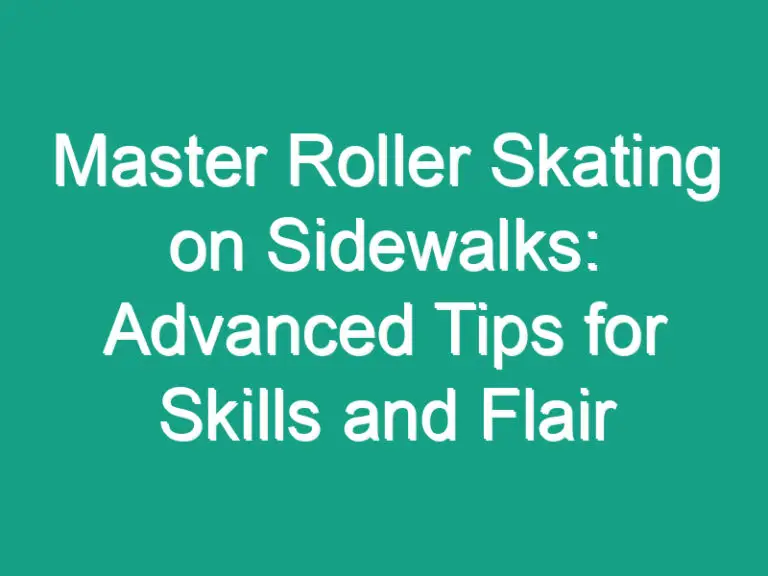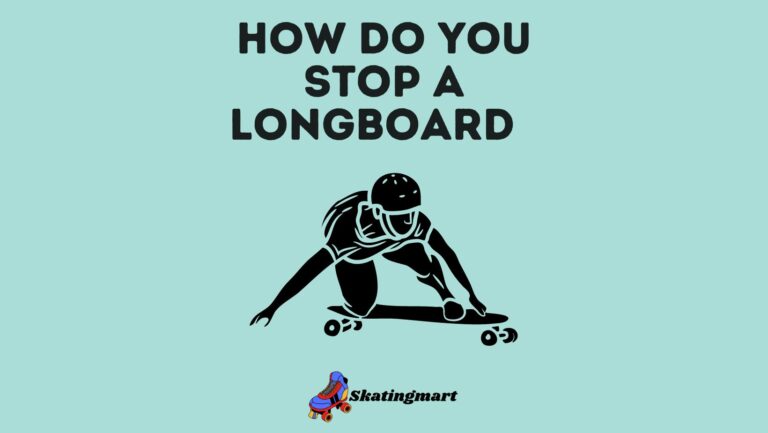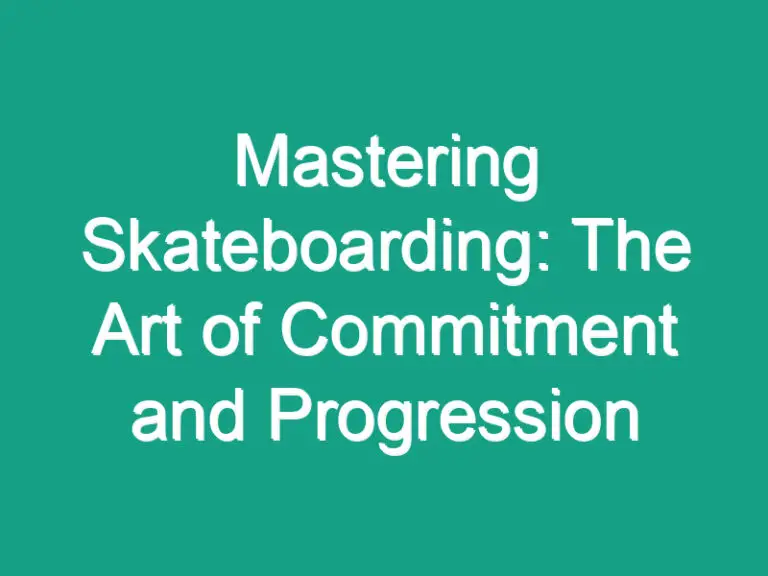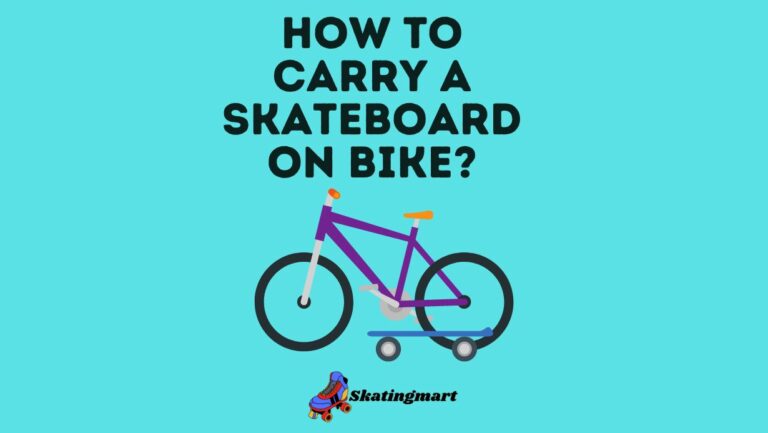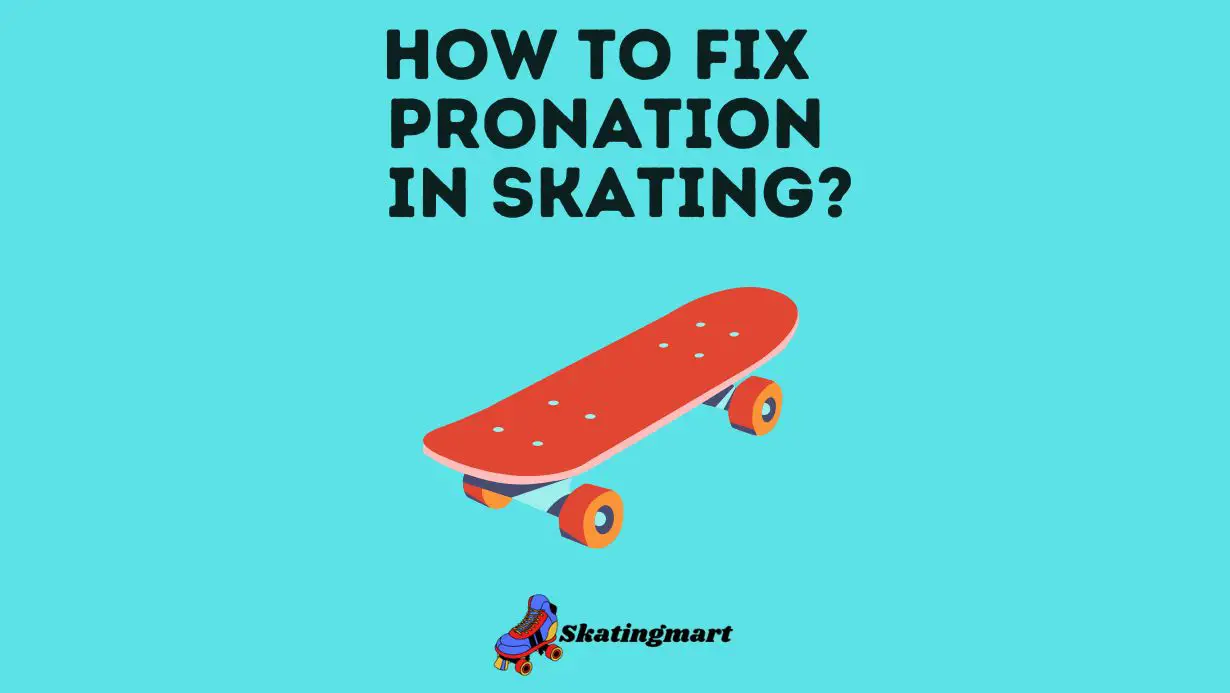
Pronation in skates is a common problem that can be fixed with a few simple steps. The first step is to identify what pronation is and how it affects your skating. Once you know what pronation is, you can take steps to fix it. Pronation is when your foot rolls inward when you walk or skate. This can cause your ankle to collapse and put stress on your knees and hips. It can also lead to blisters and other foot problems.
There are two main ways to fix pronation in skates: through arch support or by changing the way you skate. Arch support helps to prevent pronation by supporting the arch of your foot. You can get arch support through insoles, orthotics, or custom-made skates.
Changing the way you skate can also help reduce pronation. Skaters who pronate should try to keep their weight on the outside of their skates and avoid crossing their feet when they turn. With these simple steps, you can fix pronation in skates and enjoy skating without pain or discomfort.
What Is Pronation In Skating?
Pronation is a term used to describe the natural inward roll of the foot that occurs when we walk or run. The pronated foot can be thought of as having a flat arch, and when we pronate our skates, it means that our weight is evenly distributed across the entire blade. This gives us good balance and traction, but it also puts extra stress on our ankles and knees.
Pronation is normal and necessary for shock absorption and proper foot function. However, when pronation occurs excessively or unevenly, it can cause problems. Excessive pronation can lead to ankle and knee injuries, particularly in people who participate in high-impact activities like running or jumping. It can also contribute to overuse injuries such as Achilles tendonitis or plantar fasciitis.
There are a few ways to tell if you have excessive pronation. If your feet feel flat or heavy when you skate, if your ankles tend to turn inward when you land jumps, or if you frequently experience pain in your ankles, knees, or hips, you may be overpronating.
There are several ways to fix pronation in skates. You can try using different lacing techniques, orthotics, or skate modifications. Some skaters find relief by simply avoiding high-impact activities; others need more aggressive treatment. If you suspect that you have excessive pronation, talk to a doctor or skating coach about the best way to treat it.
What Causes Pronation?
Pronation is caused by a combination of factors, including the way your foot strikes the ground when you walk or run, the structure of your foot, and the type of shoes you wear.
There are two types of pronation: overpronation and under pronation.
Overpronation occurs when your foot rolls inward too much when you walk or run. This can put stress on the muscles, tendons, and ligaments in your foot and ankle, and can lead to pain in these areas.
Underpronation (also called supination) occurs when your foot doesn’t roll inward enough when you walk or run. This can cause the outside of your foot to bear most of the weight, which can also lead to pain.
If you’re not sure whether you have overpronation or under pronation, ask your doctor or a podiatrist for an evaluation. They will likely look at your feet while you’re barefoot and while you’re wearing shoes. They may also ask you to walk or run so they can see how your feet strike the ground.
How to Prevent Pronation?
Pronation is a condition where the foot rolls inward when you walk or run. This can cause pain in the arch and ankle and can lead to problems with the knees, hips, and back.
There are several things you can do to prevent pronation, including:
-Wearing supportive shoes: Shoes with good arch support and a cushioned heel can help prevent pronation.
-Avoiding high heels: High heels put extra stress on the feet and can make pronation worse.
-Strengthening your feet and ankles: Exercises that strengthen the muscles around the ankle can help prevent pronation.
-Stretching your calf muscles: Stretching the calf muscles can help take some of the strain off of the feet and ankles.
How to Fix Pronation?
If you are a hockey player that suffers from pronation, there are a few things that you can do to fix the problem. Pronation is when your ankle rolls inwards and puts pressure on the inside of your skate. This can cause a lot of pain and discomfort, and it can also make it very difficult to skate. There are a few different ways that you can fix pronation, and we will go over all of them in this article.
The first thing that you need to do is make sure that you have the right size skates. If your skates are too big or too small, they will not fit properly and this can cause pronation. You need to have skates that fit snugly but are not too tight.
Once you have the right size skates, you need to make sure that they are laced correctly. If your skates are laced too tightly, they will put pressure on the inside of your foot and cause pronation. The laces should be tight enough to stay in place but not so tight that they are uncomfortable.
If you are still having problems with pronation, there are a few other things that you can try. One is to get custom orthotics for your skates. Orthotics will help to realign your foot and ankle so that they do not roll inwards when you skate. Another option is to get special insoles for your skates that help to reduce pronation. These insoles usually have
Ankle Pronation: Effects On Skating
Ankle pronation, or the inward rolling of the ankle, is a common problem among skaters. This can lead to a number of problems, including reduced speed, reduced power, and loss of balance. It can also cause pain in the ankles, knees, and hips.
There are a number of ways to reduce pronation in skates. One is to use an ankle support system that helps keep the foot in a neutral position.
Another is to use special insoles that support the arch of the foot and help reduce pronation.
Eventually, proper stretching and strengthening exercises can help decrease pronation.
Why Are My Skates Leaning Inward?
If you notice that your skates are leaning inward, it’s likely that you have a case of pronation. Pronation is when the foot rolls inward while walking or running, and it can cause pain in the ankles, knees, and hips.
While pronation is a common issue, it’s important to correct it so that you can avoid long-term pain and injury. There are a few simple things that you can do to fix pronation in your skates:
1. Check the fit – Make sure that your skates are properly fitted for your feet. ill-fitting skates can contribute to pronation.
2. Wear supportive shoes – Wearing shoes with good arch support can help reduce pronation.
3. Use orthotics – Orthotic devices such as insoles or arch supports can help correct pronation.
4. Strengthening your feet – Strengthening the muscles in your feet can help reduce pronation. There are specific exercises that you can do to target these muscles.
If you notice that your skates are leaning inward, it’s likely that you have a case of pronation. Pronation is when the foot rolls inward while walking or running, and it can cause pain in the ankles, knees, and hips. While pronation is a common issue, it’s important to correct it so that you can avoid long-term pain and injury
Can You Put Insoles In Ice Skates?
If you’re an ice skater with pronation issues, you may be wondering if you can put insoles in your skates. The short answer is yes, you can! However, there are a few things to keep in mind when doing so.
First, it’s important to make sure that the insoles you choose are thin enough to fit inside your skates without changing their fit. You’ll also want to avoid insoles with too much cushioning, as this can make your skates feel uncomfortable and cause them to rub against your feet.
Once you’ve found the right insoles for your skates, simply insert them into the skating boots and enjoy improved support and comfort on the ice!
Solving Pronation And Supination For Inline Skaters
When you pronate, your foot rolls inwards and your ankle collapses. This can cause problems with your balance and make it difficult to control your skates. Supination is the opposite – your foot rolls outwards and your ankle is raised. This can also cause problems with balance and control.
There are a few things you can do to solve these problems:
1) Check your skate’s fit – ill-fitting skates are one of the main causes of pronation and supination. Make sure your skates are tight enough that they offer support but not so tight that they restrict movement.
2) Use an orthotic or custom-made insole – these can help to correct the alignment of your foot and reduce pronation and supination.
3) Strengthen your ankles – weak ankles are often the cause of pronation and supination. Try doing some exercises to strengthen them, such as calf raises or ankle rotations.
4) Improve your skating technique – poor technique can lead to pronation and supination. If you’re not sure how to skate correctly, ask a coach or experienced skater for help.
5) Use a skate guard – when you’re not skating, wear a skate guard over your skates to keep them from rolling inwards or outwards.
Pronation and supination can be annoying problems, but they’re usually not serious. With a little bit of effort, you can solve them and get back to enjoying your skating!
How To Keep Ankles Straight When Ice Skating
When you are ice skating, you want to make sure that your ankles are straight. This will help you balance and also prevent injury. There are a few things that you can do to keep your ankles straight when ice skating.
First, make sure that you have the right size skates. If your skates are too big or too small, it can cause your ankles to turn inward or outward.
Second, tighten your laces so that your foot is secure in the skate but not too tight. You should be able to wiggle your toes.
Third, practice balancing on one foot and keeping your ankle straight. You can do this by holding onto the wall or a railing for support.
Fourth, stretch your calf muscles before skating to loosen them up.
Fifth, pay attention to how you land when jumping. Try to land with both feet flat on the ice at the same time.
If you follow these tips, you should be able to keep your ankles straight when ice skating and avoid pronation in skates.
How To Stop Inline Skates Skates?
There are many ways to stop inline skates from skating. Some people use a special device called a skater’s stop, while others just let their skates hang over the edge of a table or other object. The most important thing is to practice stopping in different ways so that you can learn what works best for you.
One way to stop your skates is to use a skater’s stop. This is a small, metal device that attaches to your skate and helps you stop quickly and safely. Skaters’ stops are available at most skate shops and online retailers.
Another way to stop your skates is to let them hang over the edge of a table or other object. This method works well if you have strong balance and coordination. To do this, simply place your skate on the edge of the table and allow it tohang over the side. Then, use your body weight to slowly push down on the skate until it comes to a complete stop.
Finally, you can also use your handbrake to help stop your skates. Handbrakes are located on the back of most inline skaters and work by slowing down the wheels of the skate. To use your handbrake, simply squeeze the lever until you feel resistance. then release the lever slowly until your skate comes to a complete stop.
Conclusion
If you are a skater with pronation issues, there are a few things you can do to fix the problem. First, try adjusting your stance. Second, check your skate blades for wear and tear and replace them if necessary. Third, consult with a skating coach or professional to get fitted for custom insoles or orthotics. By following these tips, you should be able to reduce pronation in your skates and improve your skating performance.

Hi, This is Roasalin, I have loved Skating since my early childhood days, and here I share my experiences and tips for beginners who want to turn into pro skaters. I hope you find it useful. you can contact me here

